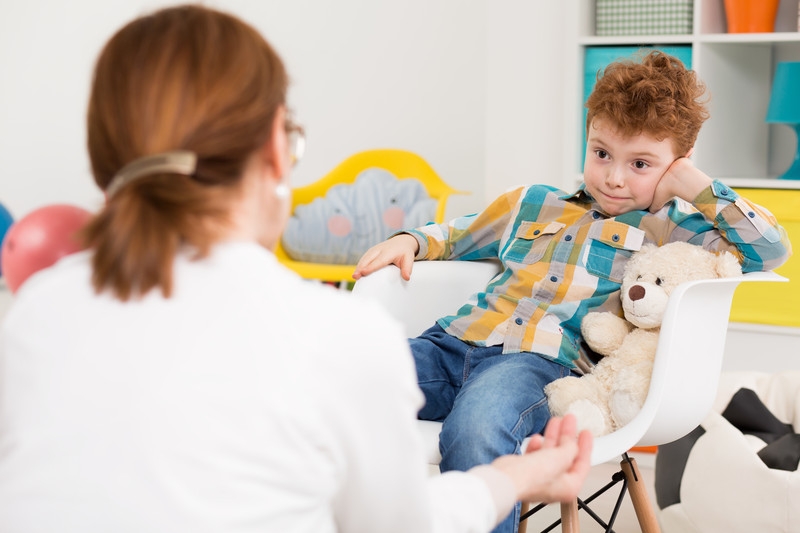How does a Teacher Handle a Child with ADHD?
The issue of preparing the child is one of the pivotal issues of greatest importance in society. It's the basis for the formation of the human personality. A normal person with a healthy personality results if it's built the right way.
Most researchers and scientists have been studying and analyzing childhood issues to identify their causes and try to develop the appropriate treatment for them or determine the appropriate way to deal with them. Among those problems is the movement and activity of children.
Children are known to be very rowdy and hyperactive at some point in their lives, and their attention to what's happening around them is poor. However, there are certain cases in which this hype-activeness exceeds the normal acceptable limit, which is called "Attention Deficit Hyperactivity Disorder."
Recently, this topic has received great attention from scholars and researchers, whether in education or psychology. They've tried hard to identify its causes, symptoms, and treatment methods because of this disorder's effects on the child's life. Researchers found that there is a close relationship between ADHD or hyperactivity disorder and learning difficulties, i.e. difficulty in perception, memory, reading, writing, and difficulties in calculations.
In addition to learning difficulties, this disorder affects the child’s oral understanding, and this reflects negatively on the social, emotional, and cognitive as well as metacognitive aspects. These children don't lack mental abilities as much as they lack good and correct educational care.
The teacher often needs help dealing with this group of students, as they constitute an obstacle to the educational process within the classroom. Therefore, the teacher spends a significant amount of time controlling them, which affects the teacher's motivation to teach. So, how should teachers deal with a child who suffers from this disorder?
The Definition of ADHD:
The problem of hyperactivity in children is one of the most prominent behavioral problems in childhood. This problem varies between societies and between countries, and their percentage ranges from 6 to 7% for those under 18 years of age. The highest percentage is found in the continent of North America, where 16% were diagnosed in schools in the United States of America with ADHD, while in the Arab world, some studies indicate that the incidence ranges from 15 to 20%.
ADHD is a neurobehavioral disorder that appears in the form of inability to concentrate for a sufficient period of time. It can also appear as behavior characterized by excessive movement and exaggerated and aimless activity that does not fit the situation and causes inconvenience to others. Both phenomena can exist together.
The Encyclopedia of Psychology defines it as "a child who cannot focus attention, who is impulsive and hyperactive. These symptoms increase in intensity in situations that require the child to conform to self, as well as self-judgment that shows a deficiency in the extent and quality of academic achievement and a deficiency in social functions." In medical terms, ADHD is defined as “a neurobiological disorder that leads to a severe deficiency process that affects children in a proportion of 3 to 5%.”
A large number of studies have different definitions in form and united in content for this disorder, as they meet as a disorder that affects the nerve centers. This causes problems and dysfunction in the brain's work, such as thinking, learning, behavior, and memory. Studies have also agreed that the rate is higher in males than females and in families with a low economic and social level is higher than families with a good economic level.

The characteristics of a child with ADHD:
- Excessive movement: The child moves continuously, whether at home or at school, moves from one activity to another without completing any of them, doesn't settle in one place and moves their limbs even in a sitting position.
- Talking a lot: The child talks a lot, interrupts others even if they don't have useful things to say.
- Absent-minded and poorly attentive: The child does not focus on what's being said and gives quick answers without thinking or hearing the question.
- The child does harmful things to themselves or to those around them.
- The child has trouble controlling their emotions. They get angry quickly and at the same time can calm down quickly.
- The child often moves from their seat in class and fidgets with their hands or feet, as they run or jump and climb walls in inappropriate situations.
- Genetic Causes.
Causes of hyperactivity in children:
Genetic causes play a role in ADHD through direct or indirect gene transfer, by transmitting these genes to structural defects that affect brain tissue and lead to damage, and in turn, affect the nerve centers of attention, perception, and memory.
1. Environmental causes:
These include the mother's exposure to X-rays during pregnancy, taking medicines during the first months of pregnancy, or taking alcohol or drugs, or malnutrition during pregnancy, all of which causes the fetus to suffer from brain damage. In addition, postpartum accidents may affect the child, such as frequently hitting the head on the ground or suffering from some diseases, such as meningitis and dwarf fever. The child's eating of sugary substances in abundance increases their movement and activity.
2. Organic causes:
Such as a disorder that may affect the brain, a defect in the nervous system, or an imbalance in neurotransmitters.
3. Social causes:
Some of them are methods of parental treatment characterized by indifference and neglect of the child and the adoption of methods of physical punishment and cruelty and methods that make them feel unloved and rejected. Otherwise, the reason may be excessive protection and pampering. Problems experienced by the family, such as poor family harmony or divorces and deprivation of one of the parents are other reasons that make it an unstable family and increase pressures on the child. This is reflected in the child's behavior and movement.
There is school as well. For a child, school is a complex environment compared to family. The child's behavior may be an imitation of an older child or a reaction to a situation in which they can't make a decision.
4. Psychological causes:
Many psychological reasons lead a child to hyperactivity, such as anxiety, tension, psychological pressure, lack of comfort and security, low level of self-confidence, inferiority complex, severe frustration, continuous rejection of the child’s work, and belittling what they accomplish and do.
Treatment of a child with ADHD:
Treatment methods for ADHD vary according to causes, such as medical treatment, behavioral therapy based on modifying the child's behavior, psychotherapy contributed by psychiatrists, and treatment with a specific diet.

1. Medical Treatment:
Doctors assume that hyperactivity is caused by a malfunction of the brain. Therefore, doctors resort to giving the child some medications to calm their movement, and despite the effectiveness of these drugs and their ability to calm the child and make them less mobile and more attentive, they have side effects like pushing them to sleep, lethargy, loss of appetite, etc.
2. Behavior modification using behavioral therapy:
Assuming that the child's symptoms of hyperactivity are only behavioral manifestations whose effects are reflected on the surrounding community in general, it was necessary to follow a behavioral therapy method to treat these manifestations. Behavioral therapy is a specific learning that aims to bring about positive changes in the child's behavior, and teachers often use this type in dealing with cases of hyperactivity in their students.
3. Diet therapy:
Although there is no confirmation by everyone that this is related to hyperactivity, many studies on hyperactivity indicate that a large proportion of this group eats sugary substances. Therefore, children's adoption of a diet without sugars, preservatives, and artificial colorings contributes to calming their movement.
4. Psychotherapy:
Psychotherapy in cases of ADHD is important for both the child and their family to teach them how to deal with them. This type of treatment is usually resorted to when there are reasons that increase psychological stress, frustration, and depression, such as family problems and others.
How does a teacher handle a child with ADHD?
1. Reinforcement:
It is every action that can lead to the reinforcement of the learned behavior, and there are two types of it:
Positive reinforcement:
It is to provide any stimulus or reward to the child when doing the required behavior. Positive reinforcement has several types. There are nutritional reinforcers that give the child something they like to eat, and there are social reinforcers such as saying words of praise. Among the types of reinforcers are also activity reinforcers. That is, involving the child in the activities they love, whether inside or outside school.
Physical reinforcements that give the child physical objects that they love such as crayons, and symbolic reinforcement, which is material objects given to the student when they fulfill a condition as soon as they perform the desired behavior, such as paper clips with beautiful shapes or stars, etc. For example, when the child can sit still and pay attention to what the teacher is saying, they are given words of praise with a sign of distinction.
Negative reinforcement:
It discourages the child from doing an undesirable act by using certain methods, including punishment, such as depriving the child from participating in the sports activities they love or lowering their grades in oral classroom activities.
2. Playing:
Playing is one of the most common methods that can be used to modify and change the child’s behavior. Playing contributes to the development of the child’s personality in its various dimensions, such as asking them to play a role with two contradictory personalities and to distinguish between the pros and cons of each.
3. Modeling:
The model-learning method is based on observation so that models of the desired behavior are presented. For the success of this method, it is necessary to attract the child's attention before and during the presentation of the model.
4. Homework:
Teachers can assign some household functions that reinforce the child's positive behavior.
In conclusion:
The problem of ADHD affects the child's current and future life as well. As their academic achievement declines, their relationships with their teacher and peers, as well as their family, become troubled, dominated by constant tension and aversion from some people, which in turn will reflect on the child’s psyche and cause them to have low self-esteem and various psychological problems that hinder their proper development. The teacher is best suited to discover this problem early due to their knowledge and experience. They must develop a special treatment program for the child within the classroom and inform the child’s family about it to help them build a healthy personality and lead a balanced life.